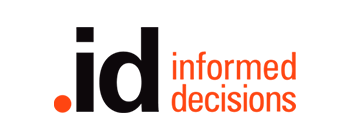Imports by industry are sales of goods and services from industries located outside the Kyogle Plains boundaries to resident households, businesses and other organisations within the area. Imports (domestic) includes all imports from other parts of Australia to the Region.Imports (international) includes the value of all imports to the area from outside Australia.
To get the full picture how each industry sector contributes to the regional or state economy, import data should be viewed alongside the other industry characteristics in the Industry sector analysis section.
Detailed notes about how the figures are derived can be found in the specific topic notes section.
Data source
National Economics (NIEIR) - Modelled series
Current area:
Current benchmark:
Comparison year:
Import type:
| Total imports | |||||||||
|---|---|---|---|---|---|---|---|---|---|
| Kyogle | 2022/23 | 2017/18 | Change | ||||||
| Industry | $m | % | NSW | $m | % | NSW | 2017/18 - 2022/23 | ||
| Agriculture, Forestry and Fishing | 10.6 | 2.0 | 3.4 | 11.6 | 2.4 | 3.4 | -1.0 | ||
| Mining | 13.6 | 2.6 | 8.3 | 28.6 | 5.8 | 12.7 | -15.0 | ||
| Manufacturing | 130.3 | 24.6 | 31.7 | 120.6 | 24.6 | 30.1 | +9.6 | ||
| Electricity, Gas, Water and Waste Services | 9.8 | 1.9 | 3.1 | 4.6 | 0.9 | 2.9 | +5.2 | ||
| Construction | 0 | 0 | 0 | 0 | 0 | 0 | -- | ||
| Wholesale Trade | 24.5 | 4.6 | 3.4 | 21.1 | 4.3 | 3.4 | +3.4 | ||
| Retail Trade | 18.6 | 3.5 | 2.0 | 16.9 | 3.4 | 2.0 | +1.7 | ||
| Accommodation and Food Services | 22.4 | 4.2 | 3.5 | 35.0 | 7.1 | 5.7 | -12.6 | ||
| Transport, Postal and Warehousing | 33.3 | 6.3 | 8.3 | 30.0 | 6.1 | 6.4 | +3.3 | ||
| Information Media and Telecommunications | 21.6 | 4.1 | 4.2 | 16.5 | 3.4 | 4.3 | +5.1 | ||
| Financial and Insurance Services | 51.4 | 9.7 | 8.2 | 50.5 | 10.3 | 7.9 | +1.0 | ||
| Rental, Hiring and Real Estate Services | 3.4 | 0.6 | 0.7 | 5.9 | 1.2 | 0.8 | -2.5 | ||
| Professional, Scientific and Technical Services | 32.1 | 6.1 | 6.4 | 27.2 | 5.6 | 5.9 | +4.8 | ||
| Administrative and Support Services | 10.9 | 2.1 | 1.6 | 10.4 | 2.1 | 1.6 | +0.4 | ||
| Public Administration and Safety | 45.4 | 8.6 | 5.6 | 31.0 | 6.3 | 4.3 | +14.4 | ||
| Education and Training | 14.4 | 2.7 | 2.6 | 13.2 | 2.7 | 2.1 | +1.2 | ||
| Health Care and Social Assistance | 68.5 | 12.9 | 4.3 | 48.8 | 9.9 | 3.8 | +19.7 | ||
| Arts and Recreation Services | 9.4 | 1.8 | 1.4 | 10.4 | 2.1 | 1.6 | -1.1 | ||
| Other Services | 9.2 | 1.7 | 1.2 | 8.0 | 1.6 | 1.1 | +1.2 | ||
| Total industries | 529.6 | 100.0 | 100.0 | 490.5 | 100.0 | 100.0 | +39.1 | ||
Source: National Institute of Economic and Industry Research (NIEIR) ©2024. ©2023. Compiled and presented in economy.id by .id (informed decisions). Data are based on a 2020/21 price base for all years. NIEIR-ID data are inflation adjusted each year to allow direct comparison, and annual data releases adjust previous years’ figures to a new base year.Learn more Please refer to specific data notes for more information | |||||||||


Dominant groups
An analysis of the total imports by industry sectors in the Kyogle in 2022/23 shows the three largest industries were:
- Manufacturing ($130 million or 24.6%)
- Health Care and Social Assistance ($68 million or 12.9%)
- Financial and Insurance Services ($51 million or 9.7%)
In combination these three industries accounted for $250 million in total or 47.2% of the total imports by industry in the the Kyogle.
In comparison, the same 3 industries in NSW accounted for 31.7% in Manufacturing; 4.3% in Health Care and Social Assistance and 8.2% in Financial and Insurance Services.
The major differences between total imports by industries of the Kyogle and NSW were:
- A larger percentage of total imports by Health Care and Social Assistance (12.9% compared to 4.3%)
- A smaller percentage of total imports by Manufacturing (24.6% compared to 31.7%)
- A smaller percentage of total imports by Mining (2.6% compared to 8.3%)
- A larger percentage of total imports by Public Administration and Safety (8.6% compared to 5.6%)
Emerging groups
The total total imports by industry in the Kyogle increased by $39 million between 2017/18 and 2022/23.
The largest changes in the total imports by industries between 2017/18 and 2022/23 in the Kyogle were for:
- Health Care and Social Assistance (+$20 million)
- Public Administration and Safety (+$14 million)
- Manufacturing (+$10 million)
- Electricity, Gas, Water and Waste Services (+$5 million)
